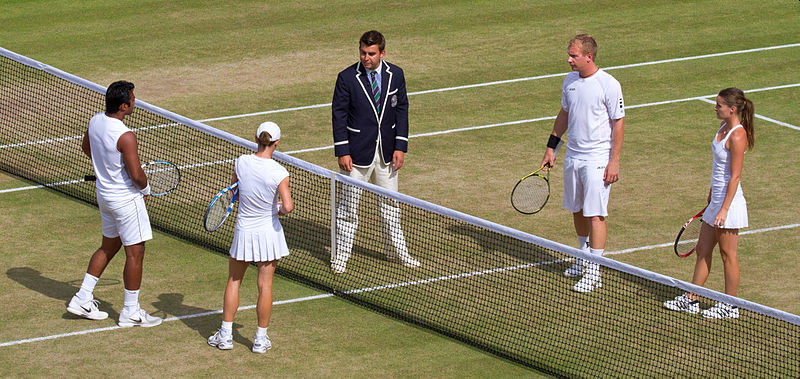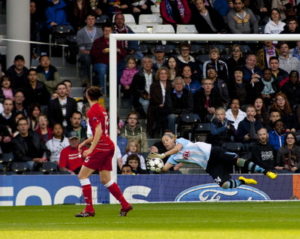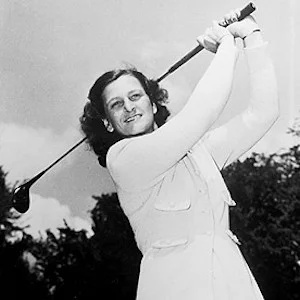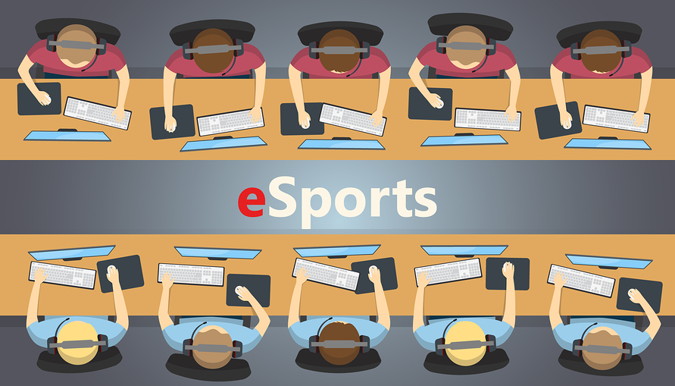Most Equal & Unequal Sports For Women
 Elsewhere on the site, you can read about the reasons why men and women don’t compete on an equal footing in the majority of sports that are played around the world. Here we’re interested in the sports that are equal and unequal for men and women, in whatever format we think applies. There are usually the same levels of opportunities for men and women in the majority of sports, if you count a version of the sport open to women as being equal, rather than being able to compete in the same tournaments as men.
Elsewhere on the site, you can read about the reasons why men and women don’t compete on an equal footing in the majority of sports that are played around the world. Here we’re interested in the sports that are equal and unequal for men and women, in whatever format we think applies. There are usually the same levels of opportunities for men and women in the majority of sports, if you count a version of the sport open to women as being equal, rather than being able to compete in the same tournaments as men.
In most sports, pay is, as with life, more heavily weighed in favour of male athletes. Indeed, there are only certain times that that is not the case, such as tennis. There are also sports where those opportunities don’t exist, so it is the case that women can not be considered to be able to compete equally. Though there are steps being taken to address the underlying inequality in most sports, that isn’t the case in all. Even when it seems as though something is being done, this is often little more than just lip service to the idea of equality.
What Do We Mean By Equal & Unequal?
The first thing to establish is what it is that we mean by equal and unequal. The reality is that it is very difficult to find out certain information that would help us in our quest to identify equality in the world of sports. A lot of the time, it is not possible to find out the exact figures that people are paid to compete in sporting events because of the secrecy of contracts, for example. Equally, it is all but impossible to know exactly what opportunities women have had to compete in a given sport at any level, let alone the highest one.
As a result, we’re looking at anecdotal evidence to explore what we can in different areas of sports. There is also the reality of the fact that some sports are more mainstream than others. New sports, such as Quidditch, tend to be open to both sexes and have been played on level playing fields from the off. The fact that they are much more niche means that we won’t be looking at them in much detail here and will instead look to focus on more mainstream sports and the ways in which they are equal or unequal, based on certain criteria:
- Pay
- Opportunities
- Crowd / Viewing Figures
- Status
Tennis

Bo Mertz, CC BY-SA 2.0, via Wikimedia Commons
Given the fact that tennis is amongst the most equal sports in the world, it is only right that we look at it as our opening gambit. In 2007, Wimbledon finally decided to adjust the prize money on offer in order to ensure that female players received the same as men for winning the championship.
That is now the case for all of the tennis Grand Slam competitions, but it isn’t the case for tennis across the board. In Rome in May of 2022, for example, the breakdown for prize money differed depending on the gender of the participants as follows:
| Round | Pay For Men | Pay For Women | Difference |
|---|---|---|---|
| Round of 64 | €21,650 | €9,456 | €12,194 |
| Round of 32 | €39,070 | €13,176 | 25,894 |
| Round of 16 | €72,865 | €23,170 | €49,695 |
| Quarter-Finalists | €136,225 | €46,322 | €89,903 |
| Semi-Finalists | €249,740 | €100,806 | €148,934 |
| Finalist | €456,720 | €195,813 | €260,907 |
| Winner | €836,355 | €332,260 | €504,095 |
It is worth noting that the women’s competition is run by the Women’s Tennis Association, whilst the men’s is run by the Association of Tennis Professionals, so the different bodies have different responsibilities. Even so, the difference between the prize money received by the men for winning and the women is great than what the female winner takes home in total.
There is a women’s tour event for virtually everyone available to the men, whilst the women’s game is taken as seriously as the men’s. In terms of viewing figures, the men’s final in 2022 was watched by a peak of 7.5 million, whilst the women’s final was seen by 3.1 million. That is obviously not the fault of the players, but is perhaps indicative of a sport that doesn’t get the attention that it perhaps deserves. Though the sport has the smallest gender pay gap, women still earned about 34% less than men across the board.
Football
 Football is the most popular sport on the planet. Whilst the women’s game was thriving in the early part of the 20th century, the Football Association made the backwards decision to deny women the right to play on Football League pitches in 1921. This rule remained in place for 50 years, meaning that the men’s game grew from strength-to-strength at a time when women were not allowed to play at all. Consequently, the men’s game is watched by far more people than the women’s game and male players are paid a lot more money than their female counterparts.
Football is the most popular sport on the planet. Whilst the women’s game was thriving in the early part of the 20th century, the Football Association made the backwards decision to deny women the right to play on Football League pitches in 1921. This rule remained in place for 50 years, meaning that the men’s game grew from strength-to-strength at a time when women were not allowed to play at all. Consequently, the men’s game is watched by far more people than the women’s game and male players are paid a lot more money than their female counterparts.
Though there have been some improvements to the pay of women in recent times, it is nowhere near the same as men. The Women’s Super League in England is one of the most professional in the world. Even so, the average salary of women playing in the WSL is £30,000, which is the sort of figure that even one of the lowest pay players can be expected to receive on a weekly basis in the Premier League. There are players that get paid more than £300,000 per year in the Super League, but reports suggest that Erling Haaland is paid £865,000 a month at Manchester City.
In terms of the number of people that tune in to watch matches, the Women’s European Championship Final in 2022 was viewed by 17.4 million on the television, whilst 5.9 million others tuned in online. Around 365 million people watched the tournament cumulatively around the world. When England’s men’s team played Italy in the final of the Euros in 2020, 31 million people watched it on the TV and 11 million more watched it online. The entire competition was seen by a cumulative global audience of 5.2 billion, showing that the women’s game still has some way to go to catch up.
Even when it comes to referees the sport is being incredibly slow to catch up, despite there being no obvious reason why a woman can’t referee elite men’s football. As we write this women have run the line in football and refereed at lower levels but a female is yet to referee a Premier League game, which is quite shocking.
Formula One
 Formula One is, by its very nature, something of an exclusionary sport. Part of the reason for the remarkable nature of Lewis Hamilton’s success is that he did it against the odds, given the privileged nature of most F1 drivers. Formula One is, in theory, a mixed-gender sport, yet there are no women on the starting grid for F1 races. That hasn’t always been the case, given the fact that five women have stood on the race track for a Grand Prix in years gone by. Many F1 teams have boasted female development drivers, but not though Lella Lombardi is the only woman to have finished a race in the top ten.
Formula One is, by its very nature, something of an exclusionary sport. Part of the reason for the remarkable nature of Lewis Hamilton’s success is that he did it against the odds, given the privileged nature of most F1 drivers. Formula One is, in theory, a mixed-gender sport, yet there are no women on the starting grid for F1 races. That hasn’t always been the case, given the fact that five women have stood on the race track for a Grand Prix in years gone by. Many F1 teams have boasted female development drivers, but not though Lella Lombardi is the only woman to have finished a race in the top ten.
A big part of the problem for women is that the sport is dominated by cisgender white males. In 2016, for example, Bernie Ecclestone declared that women weren’t strong enough to drive an F1 car quickly enough to compete. In reality, it isn’t strength that women need to succeed in the sport as much as it is financial aid. Sponsors are unwilling to invest in women drivers, for example, whilst the men who control the teams focus on male drivers. In terms of prize money, we don’t know exactly how much people get paid.
We can say that there is an amount of money that drivers get based on the success of their teams. In 2022, for example, Lewis Hamilton was paid about £22 million, whilst Yuki Tsunoda will have taken home in the region of £364,900. When the W Series was launched in 2018, it offered prize money of £1.15 million, with the champion receiving £380,000 in the first year. Though that is more than Tsunoda was reported to have earned, it is significantly less than the overall winner of the men’s Formula One championship title.
Golf
 On the face of it, there is no reason why a female golfer should be expected to struggle against a male player. The sport involves the use of the same equipment on holes that have the same problems and pitfalls for both sexes. In reality, however, things aren’t quite so simple. According to NBC Sports, the longest average driver on the Ladies Professional Golf Association Tour in 2022 was Maria Fassi, who could hit the ball 279.255 yards from the tee. The lowest player on the list was Aditi Ashok, who drove it 235.105 yards.
On the face of it, there is no reason why a female golfer should be expected to struggle against a male player. The sport involves the use of the same equipment on holes that have the same problems and pitfalls for both sexes. In reality, however, things aren’t quite so simple. According to NBC Sports, the longest average driver on the Ladies Professional Golf Association Tour in 2022 was Maria Fassi, who could hit the ball 279.255 yards from the tee. The lowest player on the list was Aditi Ashok, who drove it 235.105 yards.
When you compare that to the PGA tour, you can see that Rory McIlroy can drive the ball an average of 349.50 yards. The lowest average drive was from Robby Shelton, who hit the ball 286.30 yards. The fact that the lowest average driver on the Professional Golf Association Tour was further than the furthest average drive on the LPGA tour is noteworthy. Even though women golfers could theoretically play off the ladies’ tees, it is still a huge difference that perhaps leads into other aspects of the gender gap in golf.
In February of 2021, a report was published that suggested that women were paid about 83% less than male golfers. A female golfer winning a tournament was likely to earn six times less in prize money than a man, whilst the average salary of a golfer on the LPGA was $162,000 a year, compared to $973,000 for men. When the British Open was broadcast on NBC in 2022, a total audience of 2.52 million tuned in to watch. We don’t have exact figures for the Women’s British Open, but in 2019 an average of 1.19 million tuned in.
It Is Improving
 The good news for women’s sport is that the inequality is improving. It is a slow process, as you might imagine for an industry that is largely male dominated, but research from the Women’s Sport Trust in 2022 suggests that no quarter on record has seen as many people tune in to watch women play sport as the first quarter of that year. In Q1 of 2022, 15.1 million tuned in to watch three minutes or more of women’s sport, compared to 5.06 million the year before and a previous peak of 10.2 million in 2019. It isn’t just that more people are tuning in, but that they’re watching for longer.
The good news for women’s sport is that the inequality is improving. It is a slow process, as you might imagine for an industry that is largely male dominated, but research from the Women’s Sport Trust in 2022 suggests that no quarter on record has seen as many people tune in to watch women play sport as the first quarter of that year. In Q1 of 2022, 15.1 million tuned in to watch three minutes or more of women’s sport, compared to 5.06 million the year before and a previous peak of 10.2 million in 2019. It isn’t just that more people are tuning in, but that they’re watching for longer.
This increase in market share will mean that advertisers will find it harder to suggest that there is no financial benefit to them in sponsoring women’s sports. This, in turn, will likely lead to an increase in coverage as well as fairer pay for female participants in sports. Over time, therefore, it is likely that sports such as football, tennis and Formula One will see the pay gap reduce and the opportunities for female sports stars to grow. Whilst this isn’t all that matters, it will go a long way to providing a better sense of equality in those sports.
Plenty Of Sports Are Equal

The reality is that there are plenty of sports that are already fairly equal. The problem is, that isn’t the case with mainstream sporting events. As with real life, most instances see women pushed down the pecking order because they are a concern for those involved. There risk of a women having a child, for example, would see them missing for several months, both before the birth and after. If the sport is a particularly physical one, such as rugby or Mixed Martial Arts, a pregnant woman won’t be able to take part.
The more modern a sport is, the higher the likelihood that women will be treated as equals to male counterparts. From ‘silly’ sports such as Quidditch through to emerging markets like eSports, women get the same opportunities as men for the simple reason that there is no ingrained sexism at play. Then there is the fact that some sports are sexist in a manner that favours women, like netball. Things are improving all of the time, but when you consider that the sport with the lowest pay gap, tennis, still seems women earn a third less than men, it’s fair to say there is still a long way to go.




